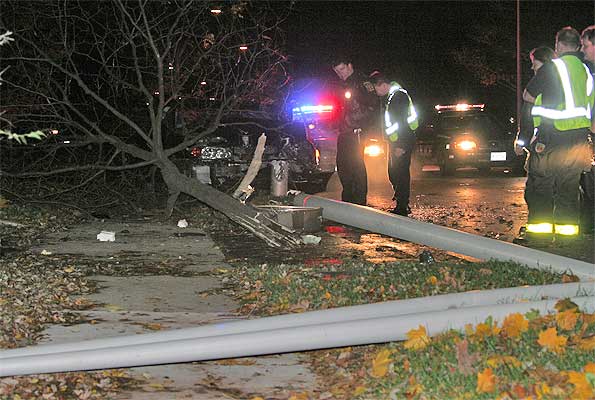November 14th, 2011 by RyanDuBosar in News
No Comments »

A 47-year-old Chicago man died after trying to remove his own pacemaker. He’s not the first to try self-surgery, as it turns out.
The Chicago Tribune described this most recent attempt at self-surgery:
“Chicago Fire Department paramedics were called after the man told a worker in the home that he was experiencing chest pains and asked them to call an ambulance.
“The man returned to his room, where he remained until paramedics arrived, police said. When they did, he complained to them about chest pains and was taken to the ambulance where he fell unconscious, police said.
“As paramedics were trying to revive him, they discovered Read more »
*This blog post was originally published at ACP Internist*
August 10th, 2010 by Toni Brayer, M.D. in Better Health Network, Health Tips, News, Opinion, Research, True Stories
1 Comment »

 Nearly 450 people die each day of sudden cardiac arrest. Many times the bystanders who witness a person collapse don’t know what to do. They are afraid they will hurt the victim or they feel nervous about doing traditional cardiopulmonary resuscitation (CPR) with mouth-to-mouth breathing and chest compressions.
Nearly 450 people die each day of sudden cardiac arrest. Many times the bystanders who witness a person collapse don’t know what to do. They are afraid they will hurt the victim or they feel nervous about doing traditional cardiopulmonary resuscitation (CPR) with mouth-to-mouth breathing and chest compressions.
New information published in the New England Journal of Medicine (NEJM) shows that hands-only CPR is potentially a lifesaving option to be used and it can improve the chance of survival equally as well as traditional CPR. This study confirms other reports that bystanders can save lives by doing chest compressions in adults and children who are not breathing. Read more »
*This blog post was originally published at EverythingHealth*
June 13th, 2010 by Edwin Leap, M.D. in Better Health Network, Opinion, True Stories
No Comments »


I was about to leave work a few nights ago when EMS was dispatched to a 10-50, which is a motor vehicle accident.
Enough years in emergency care and that tone makes your radar, but doesn’t create much of a blip. Many of those crashes have EMS arrive, only to discover no injuries. Some have patients transported, with minor problems that lead to their speedy evaluation and discharge from our ER. A few have serious, life-threatening injuries. They take all our speed, skill and attention to save life and limb. And often, require transfer to other facilities.
But this last call was none of those. Around 1AM the radio traffic crackled back to dispatch (which we could hear in the emergency department): “Probable Signal Nine.” Signal Nine means the victim is dead at the scene. Not “Dead On Arrival” (DOA) at the hospital, but no hospital necessary.
I knew the paramedics were finished when they asked dispatch to call for the coroner. And my heart sank a little. For all that a multi-trauma is work, I’d rather do it anytime than have someone die, and someone learn of the death. Read more »
*This blog post was originally published at edwinleap.com*
June 1st, 2010 by KevinMD in Better Health Network, Health Policy, Opinion, Research
No Comments »

How fast should an ambulance go? The stereotypical speeding ambulance with lights flashing and sirens blaring is the image that most conjure up. But recent data suggests that transport speed may be overstated.
In a fascinating piece from Slate, emergency physicians Zachary F. Meisel and Jesse M. Pines examine that very question. They cite a recent study from the Annals of Emergency Medicine, which concluded that a fast transport speed didn’t necessarily save lives. Read more »
*This blog post was originally published at KevinMD.com*
April 4th, 2010 by Bongi in Better Health Network, Health Policy, News, Opinion, True Stories
No Comments »

This isn’t really my story, but in a sense it belongs to all South Africans. It’s our shame and may be part of our downfall.
We are a people at war. We war against ourselves and we war against peace. Each fights for himself and bugger the rest. But who heals the fallen? It seems in South Africa that quite soon it may be no one.
Recently a story made the news. It was shocking, but it actually gives an inclination of how morally decayed South African society has become. An ambulance was despatched to some informal settlement after a household fire burned a child. The caretakers of the child brought the child to an intersection that the ambulance would actually be able to find. quite soon the paramedics were hard at work stabilising the screaming child. At about this stage, two armed thugs turned up. They threatened the child’s caretakers with their lives and forced them to flee. Then, while the child continued to scream in pain, they raped the female paramedic. They were not caught. Read more »
*This blog post was originally published at other things amanzi*




 Nearly 450 people die each day of sudden cardiac arrest. Many times the bystanders who witness a person collapse don’t know what to do. They are afraid they will hurt the victim or they feel nervous about doing traditional cardiopulmonary resuscitation (CPR) with mouth-to-mouth breathing and chest compressions.
Nearly 450 people die each day of sudden cardiac arrest. Many times the bystanders who witness a person collapse don’t know what to do. They are afraid they will hurt the victim or they feel nervous about doing traditional cardiopulmonary resuscitation (CPR) with mouth-to-mouth breathing and chest compressions.











